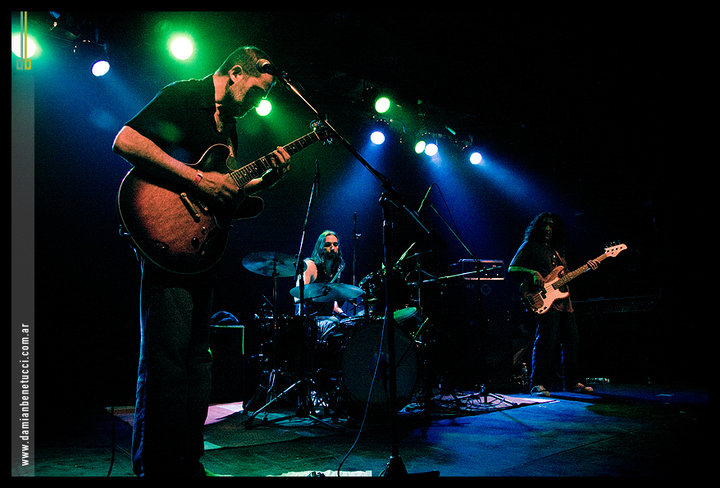As a devout music lover, one of feels about music the way I imagine some people feel about religion, I knew that the music of my film would have to be very special.
Artistic collaborations come sometimes from admiration, careful consideration, and sometimes, plainly, from the desire to work with someone in particular, because we just think it would be a great experience.
The original music of my film, RAUL (the charrua) came from a mixture of the above. First, I had already worked with (Argentinean pop-star turned production guru) Tito Losavio on a fantastic record by my friend, the Uruguayan singer Liese Lange. I admire Tito as a musician and producer and we are also very good friends.

That part of the choice, namely, that Tito would create the original music for the film, seemed very natural, but there was another part that made me very happy, but it was kind of a leap of faith and a sheer trusting of instincts.
Since I met the wonderful Eli-u, daughter of the late EL PRINCIPE, our own Uruguayan version of Bob Marley, to sum it up for someone who never heard of him, I was fascinated by her. She instantly became my favorite female vocalist, she was the freshest, most impressive live act I had seen in years.
I can’t put my finger on it as to when I decided that I would pair up Eli-u with Tito. It just sort of happened. I just thought it would be nice if Tito’s music had some interesting vocals and I headed down to Eli-u’s to listen to some of her own compositions.
As I had only seen Eli-u performing her father’s wonderful songs, I didn’t know what to expect. What I knew was that someone who can sing and perform like her must have a lot to say, and I was sure she could make her own music.

When I first had asked Eli-u whether I could listen to some of her own music, she replied that she only played around with her vocals, and that her songs had no lyrics. Instead of deterring me, this excited me a great deal. When I finally listened to the tunes, my hopes were confirmed: Eli-u’s vocal ramblings were inspired experimentations, which showed her depth of musical understanding, as well as the tip of an iceberg rising out of oceans of expression and ideas. I remembered she had even integrated the barking of her dog (MIngus) into one of the tunes.
When I arrived in Buenos Aires with Eli-u, my friend Cristina picked us up. We were to drive out to Tito, his wife Noelia and their son Blanco’s house out in La Orketa, in the green and beautiful outskirts of Buenos Aires. We would all have lunch by the pool there, and then Eli-u would record the vocals over Tito’s tracks.
Before I give you a glimpse of those sessions, let me say a bit about the music Tito composed and how we worked.
As this was the first time I was having someone else compose music for me BEFORE THE FILM WAS CUT, I honestly had no clue how to go about it. So, I imagined a couple of sequences and Tito blindfoldedly, almost without seeing any images, had to compose music for a hopeless moment, a moment when an athlete faces an insurmountable obstacle, or a romantic moment where the music was to create the impression that a couple dancing was removed from their ordinary surroundings.
I was so moved when I received Tito’s first tracks. There was something Peter-Gabriel-esque about some of them, and, as a devout Peter Gabriel fan, this pleased me greatly. But Tito had also created very personal music. The main theme he created for RAUL was also reminiscent of the traditional music of the Uruguayan and Argentinean countryside, something that a man like RAUL, born in 1934 in that same countryside, could totally relate to. There are parts of that tune that evoke the movement of the wheel carts that Raul must have ridden in his childhood out in the tiny village of Piraraja, where his dad was the local school teacher.

The result of getting Tito together with Eli-u was brilliant. The soulful vocals completed the music in a way I could never had imagined. Eli-u and Tito totally hit it off, the pasta we ate in the sun was delicious and so was the wine. It was all in all one of the most blissful days in this crazy movie making experience.
The film’s track list was completed with 4 tunes by Nico Ibarburu, one of which is a rendering of Eduardo Mateo’s La Mama vieja, three tracks by Eli-u’s dad EL PRINCIPE, one performed by the man himself, one by Eli-u, and the last one by Pablo Damonte, plus one original song called Day of training by Uruguayan hip hop band Contra las cuerdas. Last but not least, RAUL himself plays a traditional Uruguayan song on guitar, which was composed by Osiris Rodriguez Castillos.
Everyone featured in that soundtrack is a dear friend, and the only regret I have is that I really wanted to include another talented friend, Francisco Fattoruso, in the lineup, but that was impossible this time. In any case, that gives me something to look forward to for the next project.
